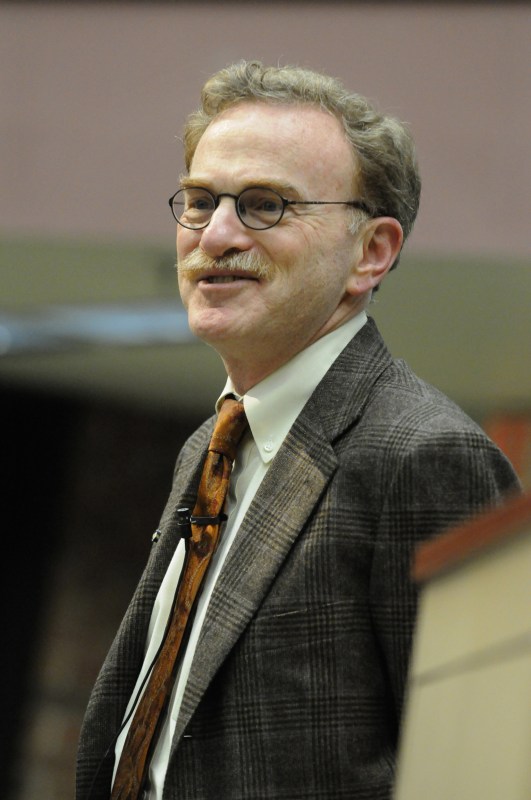
Randy Schekman, Ph.D., speaks on protein secretion pathways and the insights they provide to human disease at his Discovery Lecture last week. (photo by Mary Donaldson)
Discovery Lecturer details pathway to protein secretion
As lecture attendees ingested and began digesting their boxed lunches, Discovery Lecturer Randy Schekman, Ph.D., described the labyrinthine intracellular membrane system responsible for transporting and releasing the insulin that would be secreted after the meal.
“We know that insulin is produced by a process of transfer through intracellular membranes where it accumulates within granules that are stored awaiting discharge by fusion at the cell surface and secretion to the outside of the cell,” said Schekman, a professor in the Department of Molecular and Cell Biology at the University of California, Berkeley.
“How is it that insulin molecules find their way through this assembly line pathway to eventually reach the cell surface?”
His lab at the Berkeley has worked on this fundamental question since the mid-1970s.
Schekman's work in yeast has identified and characterized many of the key players in this process — genes that code for proteins at various points along the cellular pathway from the endoplasmic reticulum (where they are produced) to cell surface (where they are released).
Schekman, who is also a Howard Hughes Investigator, a member of the National Academy of Sciences, and editor-in-chief of the Proceedings of the National Academy of Sciences, shared the 2002 Albert Lasker Award for Basic Medical Research with James Rothman, Ph.D., for their discoveries about this process.
Although his work has focused on this basic cellular process, in recent years, mutations in many of the genes his lab identified have been linked to human diseases — from malabsorption disorders to spina bifida.
“I never thought that any human patients would turn up with lesions in these genes because these genes are essential in yeast, and I didn't think it was likely that anyone would make it past embryonic development with a serious lesion (in these genes),” he said.
“But, of course, I was foolish to think that because mammals are obviously more complex than yeast, and all these genes have been duplicated.”
Schekman's lecture was sponsored by the Office of the Vice Chancellor for Health Affairs.
For a complete schedule of the Discovery Lecture series and archived video of previous lectures, go to www.mc.vanderbilt.edu/discoveryseries.













